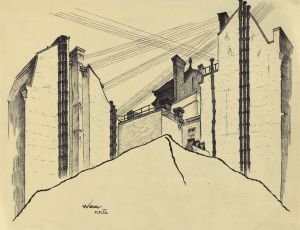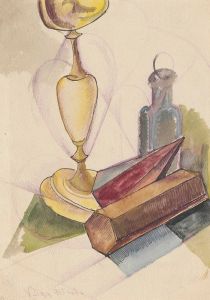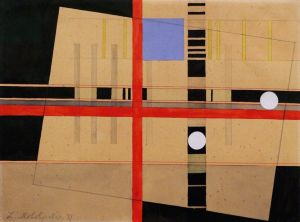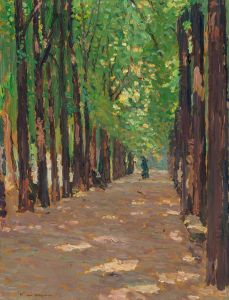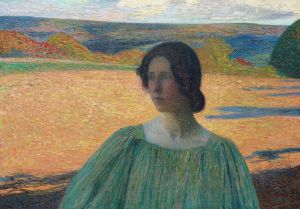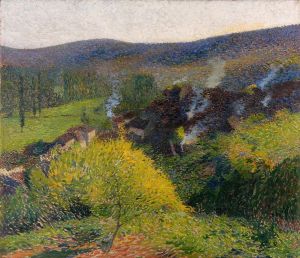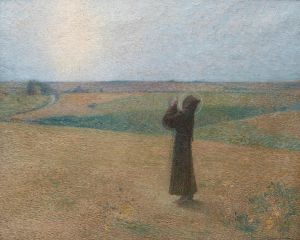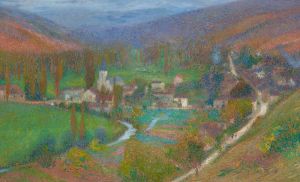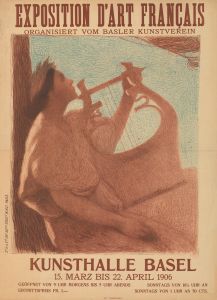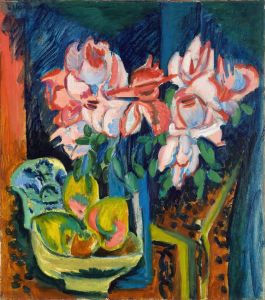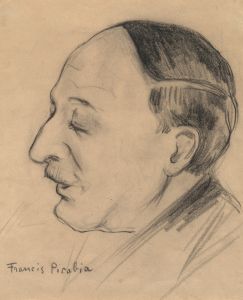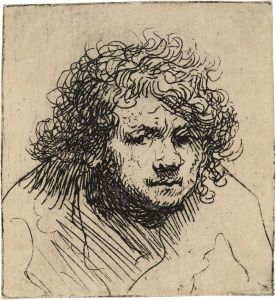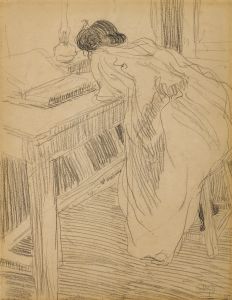
Homme en buste de profil
A hand-painted replica of Henri Martin’s masterpiece Homme en buste de profil, meticulously crafted by professional artists to capture the true essence of the original. Each piece is created with museum-quality canvas and rare mineral pigments, carefully painted by experienced artists with delicate brushstrokes and rich, layered colors to perfectly recreate the texture of the original artwork. Unlike machine-printed reproductions, this hand-painted version brings the painting to life, infused with the artist’s emotions and skill in every stroke. Whether for personal collection or home decoration, it instantly elevates the artistic atmosphere of any space.
Henri Martin was a prominent French painter known for his contributions to the Post-Impressionist movement. Born on August 5, 1860, in Toulouse, France, Martin developed a distinctive style characterized by his use of vibrant colors and pointillist techniques. His works often depicted serene landscapes, idyllic scenes, and portraits, capturing the essence of the French countryside and its people.
"Homme en buste de profil" is one of Martin's lesser-known works, and unfortunately, there is limited information available about this specific painting. As the title suggests, the work likely features a bust-length profile of a man, a common subject in portraiture that allows the artist to explore the character and personality of the sitter through facial expression and posture.
Henri Martin's artistic journey began at the École des Beaux-Arts in Toulouse, where he studied under the guidance of Jules Garipuy. His talent was soon recognized, and he moved to Paris to further his education at the École des Beaux-Arts under the tutelage of Jean-Paul Laurens. Martin's early works were influenced by the Symbolist movement, but he gradually developed his unique style, incorporating elements of Impressionism and Pointillism.
Throughout his career, Martin was associated with the Salon des Artistes Français, where he exhibited regularly. He received numerous accolades for his work, including the prestigious Grand Prix at the Exposition Universelle in 1900. His reputation as a master of color and light earned him commissions for large-scale decorative projects, including murals for the Capitole de Toulouse and the Hôtel de Ville in Paris.
Martin's approach to painting was deeply influenced by his surroundings. He spent much of his life in the Lot region of France, particularly in the village of Labastide-du-Vert, where he purchased a property called Marquayrol. The tranquil landscapes and natural beauty of the area became a significant source of inspiration for his work. His paintings often reflect a sense of harmony and peace, capturing the essence of rural life in France.
While "Homme en buste de profil" may not be as widely recognized as some of Martin's other works, it likely embodies the same attention to detail and mastery of color that characterizes his oeuvre. Martin's portraits are known for their ability to convey the inner life of the subject, often through subtle nuances in expression and the interplay of light and shadow.
Henri Martin passed away on November 12, 1943, leaving behind a rich legacy of art that continues to be celebrated for its beauty and technical brilliance. His works are held in high esteem and can be found in numerous public and private collections, including the Musée d'Orsay in Paris and the Musée des Augustins in Toulouse.
In summary, while specific details about "Homme en buste de profil" are scarce, it is a testament to Henri Martin's skill as a portraitist and his ability to capture the essence of his subjects with grace and sensitivity. His contributions to the art world remain influential, and his paintings continue to be admired for their vibrant use of color and serene compositions.





